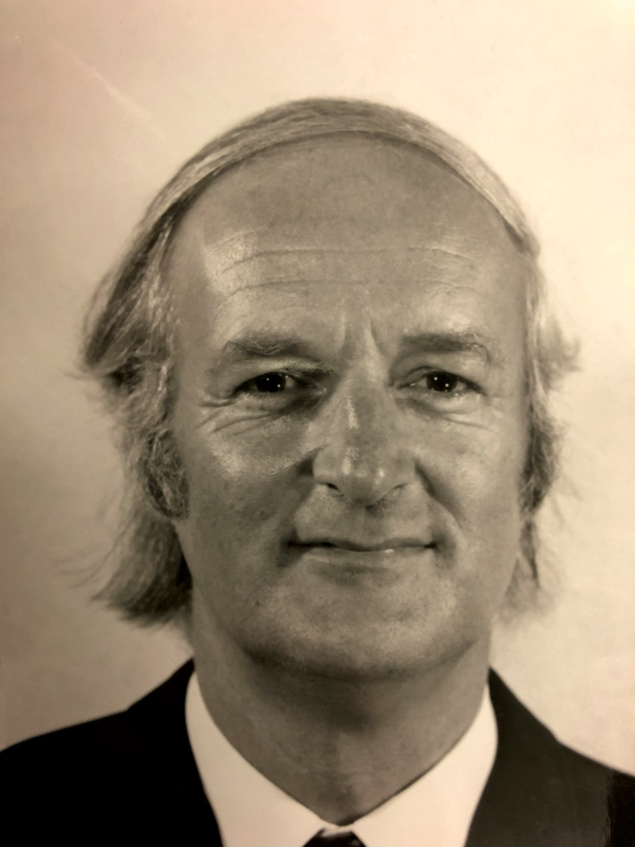
Jean-Pierre Blaser, a former director of the Swiss Institute of Nuclear Research (SIN), passed away in his home in Switzerland on 29 August 2019 at the age of 96.
In 1948 Blaser finished his physics studies at ETH Zurich, going on to participate in the development of a cyclotron at ETH built by Paul Scherrer during the Second World War. From 1952–1955 he carried out experiments with mesons at the synchrocyclotron in Pittsburgh before becoming director of the observatory in Neuchâtel from 1955–1959. In 1959 he was appointed as Scherrer’s successor and inherited from him the planning group for a new cyclotron. Originally, Scherrer wanted to copy the 88-inch cyclotron at Berkeley and use it for research in nuclear physics, but Blaser wanted something more ambitious. After receiving advice from accelerator experts at CERN, among them Pierre Lapostolle, he proposed a 500 MeV cyclotron for the production of mesons.
The key for such a meson factory was to extract the high-intensity proton beam with very low losses. The leader of Blaser’s cyclotron group, Hans Willax, realised that a conventional cyclotron would have high losses at extraction and in 1962 had the brilliant idea to break up the cyclotron magnets into separate sectors to leave space for high-voltage cavities. Blaser immediately supported the idea and pushed to get this expensive project approved by the Swiss government. Against all odds and against some strong opposition, he finally succeeded. In 1968 he founded SIN in Villigen and was its director for the next 20 years.
In a last-minute decision, based on results of CERN experiments which showed that the production of pions would strongly increase with energy, the energy of the SIN cyclotron was increased from 500 to 590 MeV. Even top accelerator specialists like the late Henry Blosser had doubts that the SIN crew would reach the ambitious design goal of a 100 μA beam current. But Blaser and Willax were convinced, anticipating that the original 72 MeV injector cyclotron would be the limiting factor and eventually would have to be replaced. In January 1974 the first protons were extracted from the ring, and at the end of 1976 the design current of 100 μA was reached. More highlights followed, right up to 2009 with 2.4 mA protons at 590 MeV and a new world record of 1.4 MW in average beam power achieved – a record that still holds today. These results gave Blaser great satisfaction, even after his retirement in 1990. Before that date he initiated in 1988 the new Paul Scherrer Institute (PSI), a combination of SIN and the neighbouring reactor institute EIR.
From the start of the accelerator project, Blaser saw the potential of particle beams to irradiate tumours. The first step, for which a superconducting solenoid was constructed, was to use pions for the treatment of deep-seated tumours. In 1984 the irradiation of eye tumours started, using protons, and to date more than 7000 patients have been treated. Later, a new superconducting cyclotron was acquired and two more gantries are now in operation. Blaser strongly supported all activities in the medical application of cyclotrons, and gave his advice to a new cyclotron project in South Africa – becoming elected as a foreign associate of the Royal Society of South Africa for his efforts.
Jean-Pierre Blaser was blessed with great intuition based on a thorough knowledge of the basic laws of physics. He was open to new and unconventional ideas and he fully motivated young scientists with his trust in their abilities. In his free time he enjoyed exploring the landscapes of Switzerland either by foot or as a pilot with a light aeroplane. But his top priority was his family. He enjoyed enormously the company of his wife Frauke, their two daughters Claudine and Nicole, and their four grandchildren. In Jean-Pierre, his family and the accelerator community loses a great personality.





